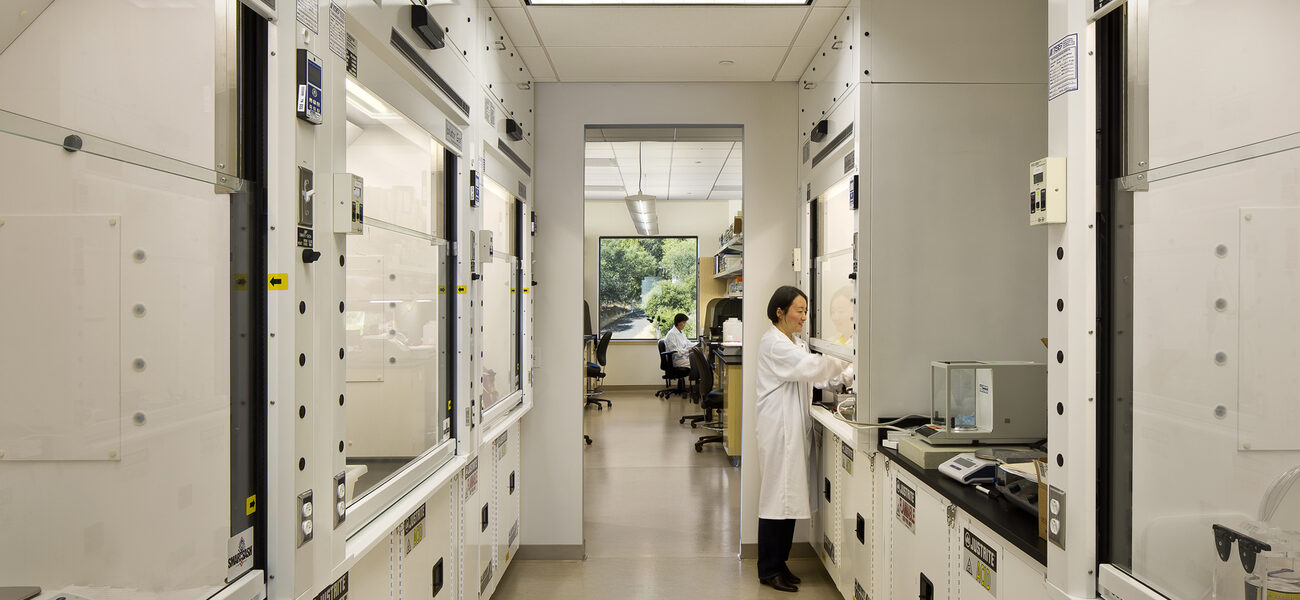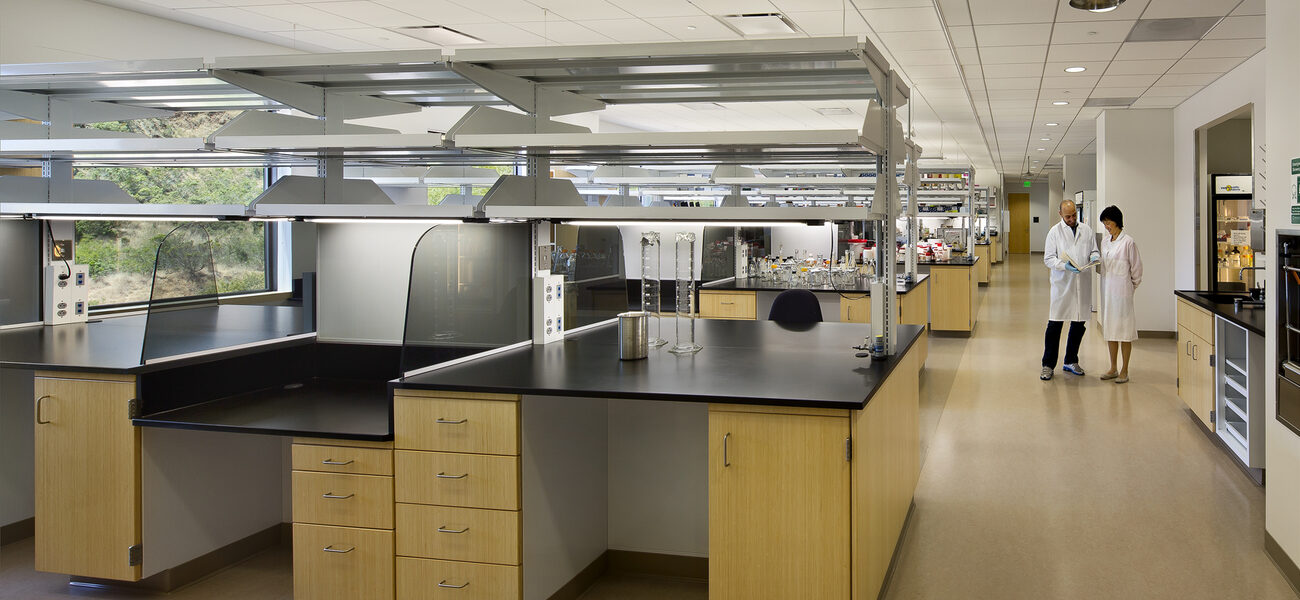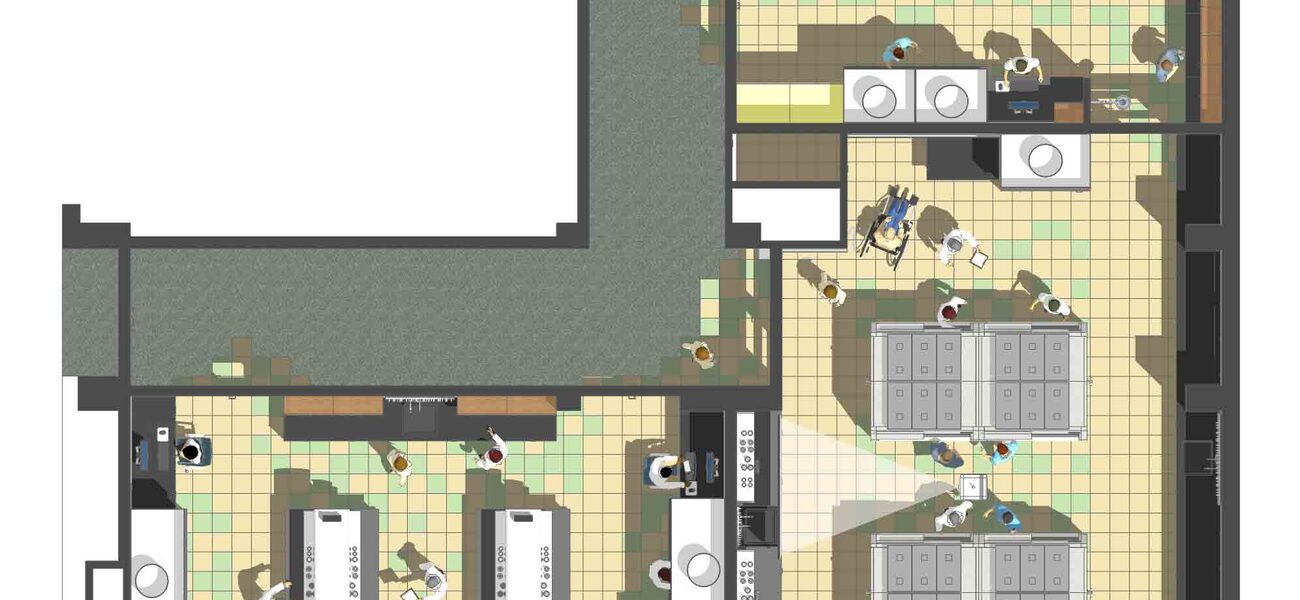The Regenerative Medicine Research Building, funded by the California Institute for Regenerative Medicine, integrates and expands the Buck Institute’s stem-cell research program to achieve increased breadth and depth of expertise in the application of stem-cell biology and technology, including how the regeneration of human cells and tissues can be used to treat life-threatening diseases of older age, such as Parkinson’s and Alzheimer’s diseases, stroke, and diabetes.
Connecting to the existing research building, this new facility provides space for as many as 12 additional principal investigators, 110 total occupants, in a program consisting mostly of open and flexible research labs, with associated lab support spaces, and office/conference space.
Research labs total nearly 17,000 sf, with 6,250 sf of shared lab support, 1,360 sf of core laboratory space, and 6,045 sf of biospecimen storage. The building also contains 1,740 sf of offices for PIs and a 3,165-sf conference center with kitchen facilities.
The labs are designed as open, flexible suites, which encourages multi-disciplinary interaction among scientists in different laboratory groups and allows the sharing of facilities and instrumentation. The Buck Institute subleases portions of the building to industry partners who are engaged in similar and translational research programs, thus expanding the services of the Institute’s existing core laboratories. For example, the new building also features a large-scale stem cell biospecimen and biorepository storage bank that serves as a shared facility for stem cell research programs at other centers in addition to the Buck Institute.
Together, these features allow the Buck Institute to train a larger number of young scientists in the use of stem cell technology in research on aging, to accommodate visiting stem cell scientists, and to foster collaborations with stem cell investigators from other institutions.
Renewable energy strategies, including expansive geothermal ground-source heat pump and heat exchange fume hood exhaust, are part of the sustainability strategy to reduce energy use, water demand, and achieve LEED certification; LEED silver certification is pending.
The project represents the second phase of a four-phase master plan. Phases III and IV call for two more 65,000-sf research buildings by 2025.
| Organization | Project Role |
|---|---|
|
Perkins&Will
|
Architect
|
|
Cahill / Otto JV
|
Builder
|
|
Alfa Tech Consulting Engineers
|
MEP Engineering
|
|
Rutherford and Chekene
|
Structural Engineering
|
|
Clark Pacific
|
Exterior Stone
|
|
Walters & Wolf
|
Curtainwall and Glazing
|
|
ISEC Inc.
|
Lab Casework and Equipment
|
|
Greenheck Fan Corporation
|
Exhaust Fans
|


